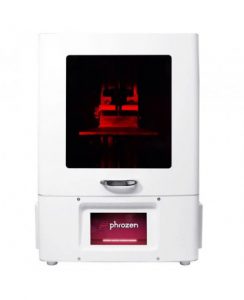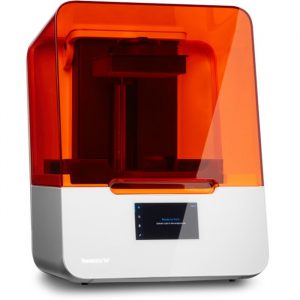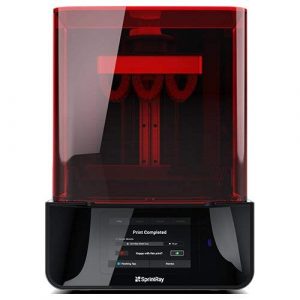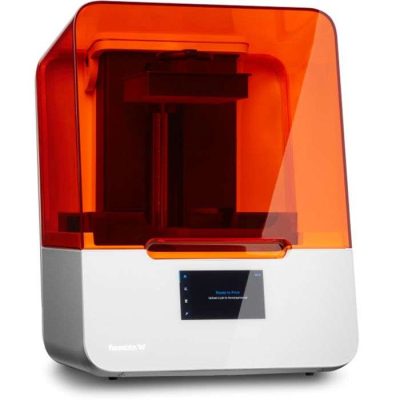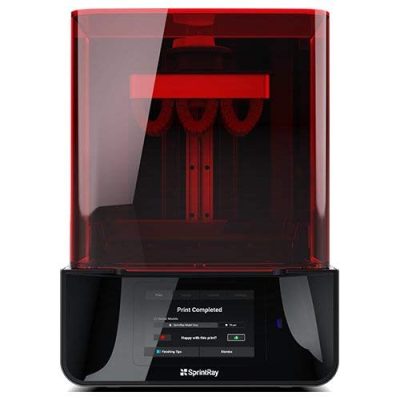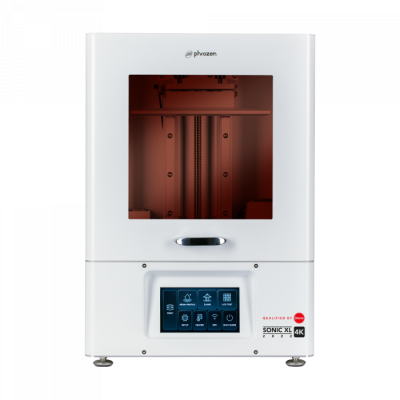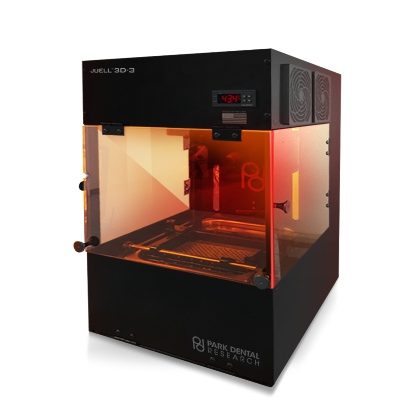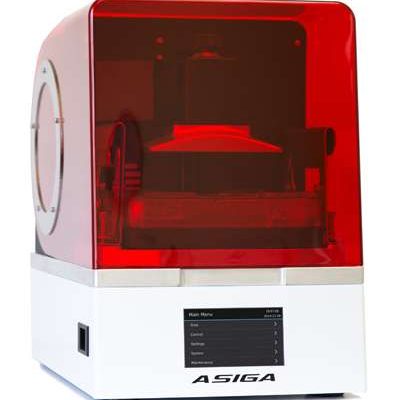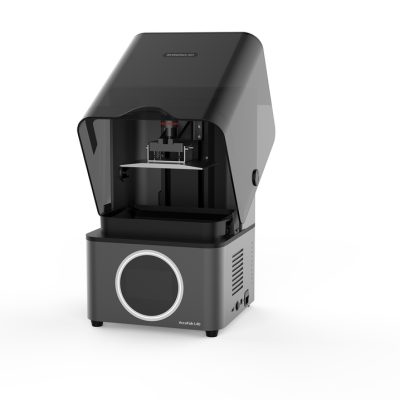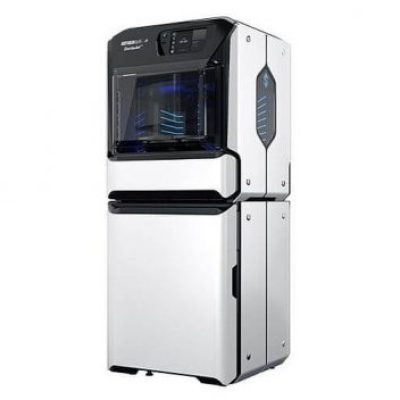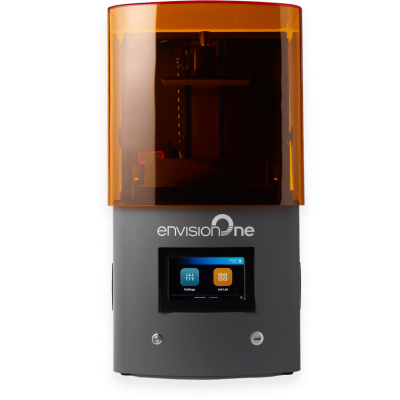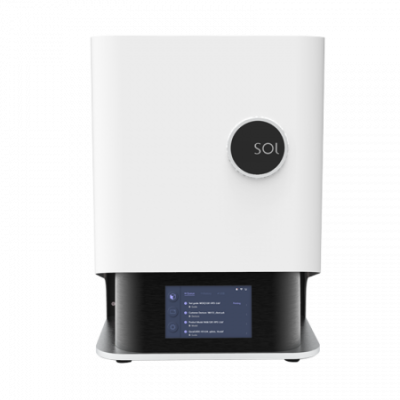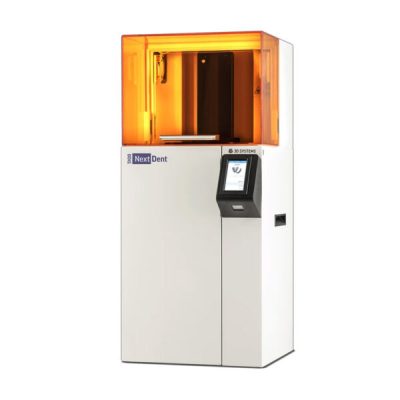- Last Updated: January 12, 2024
-
 Pat Nathaniel
Pat Nathaniel
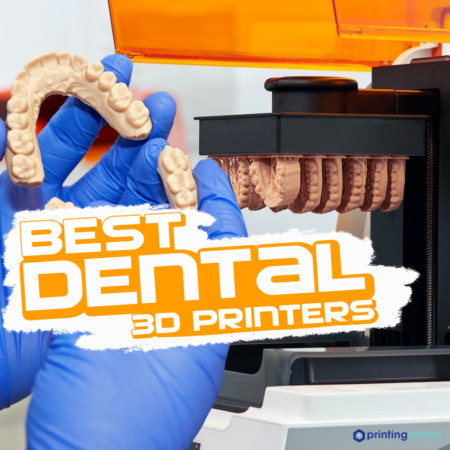 Thinking about getting a dental 3D printer for your practice but don’t know where to start?
Thinking about getting a dental 3D printer for your practice but don’t know where to start?
Dental 3D printers are turning around the dental industry. 3D-printed dental models and implants are cheap, highly accurate, and super-customizable to your patient’s specific orthodontic landscape.
If you want to save time, effort and cut down your costs by 75% up to 95% less per part (compared to outsourcing), dental 3D printing is the solution for you.
The information out there can be super confusing – but don’t worry, we’ve got you covered. This guide will break down the technicalities so you can determine the best dental 3D printer for your specific needs.
Let’s jump right into it!
Best Dental 3D Printers At A Glance
Why Invest in a Dental 3D Printer?
Weeks of back-and-forth between dental labs and offices result in so much precious time wasted.
Time that you could spend expanding your operations. Getting more patients. Learning newer and more efficient technologies.
With a shiny new dental 3D printer sitting right next to you, you can print a patient’s nightguards, dental models, or even dentures the same day they need them. And your patients are gonna LOVE the expedited service – which will set you apart from your competitors day and night.
Moving on… let’s get into the best dental 3D printers out there.
3D Printer Type: SLA | Materials: Resin | Build Volume: 145 x 145 x 185 mm
The Formlabs 3B+ is efficiency, speed, and precision in one printer.
How, you might ask?
Three words: Low Force Stereolithography (Oh boy)
Though it sounds like the final boss in a 4th-grade spelling bee, stereolithography (SLA) is, very simply, a process that uses a high-precision laser to turn liquid resin into solid parts.
And it’s one of the most accurate, precise, and versatile 3D printing technologies out there.
Low Force Stereolithography (LFS) is the heir to SLA’s throne – delivering smoother, cleaner, and more precise dental models than ever. With LFS, you can get highly detailed and accurate reproductions down to 25 microns and up to 300 microns thick.
And there’s a new stabilization component for yet more accuracy AND sharper optical clarity of translucent resins. So if you want to print impeccable nightguards, dental models, and surgical guides, this is probably the machine for you.
Precision isn’t the only word here.
Let’s talk speed — the Form 3B+ can print a single model in 20 minutes and as many as 60 models in just one day.
But what we love best about the 3B+ is its automated simplicity.
One of our favorite features is the Scan to Model option in the Form 3B+ software, PreForm.
If you have a 3D intraoral scanner, you can quickly turn your scans into dental models by clicking a few buttons – as easy as that.
And don’t get me started on the sheer convenience of the automatic preheating feature – as soon as the Form 3B+ receives a print job, it starts to heat up to the ideal temperature.
Another thing we loved about this printer was the addition of sleep mode, which makes the printer enter a low-power state when in an inactive state. So you don’t have to hit your head against the wall when you reach home and realize you’ve left the printer running — it’ll just catch up on its beauty naps itself.
The Form 3B+ isn’t compatible with third-party resins, so if you plan on working with DENTCA or NextDent resins, consider the SprintRay Pro instead.
This machine is for you if you prioritize precision and accuracy over printing volume — perhaps if you’re a smaller, high-end dental lab or clinic.
So to sum it up, if you’re looking for the best, most accurate prints, especially for dental models or surgical guides – as well as the occasional denture and permanent crown – go for the Formlabs 3B+.
Pros
- Super accurate, precise, and fast
- Good software and support
- Convenient preheating and sleep mode features
- Build platform is made especially for easy removal of printed objects
Cons
- No support for 3rd party resins
3D Printer Type: DLP | Materials: Resin | Build Volume: 182 x 102 x 200 mm
Simply put, the SprintRay Pro is the McLaren of dental 3D printers. Put it in the Dental Grand Prix, and it’ll be spraying champagne at the end ‘cause that thing is FAST!
When tested, it generated 18 clear aligner models an hour. That’s 18 patients on their way to a confident smile – with an eternity of time and hassle saved.
This printer works on Digital Light Processing (DLP) technology. It’s different from LFS and SLA in that it works much faster. This technology gives the SprintRay Pro tremendous speed – and makes it faster than the Formlabs 3B+.
In fact, DLP 3D printers can build things up to 12 times faster than SLA printers in a similar range.
In addition to its unbelievable speed is the fact that it’s got a pretty dang large build volume at 18.2×10.2×20 cm — which means you can print A LOT of stuff at once. In fact, this printer can make a batch of 30 dental models in one go.
And thanks to its open-certified resin system, SprintRay Pro supports 3rd party resins from DENTCA, such as Denture Teeth and Denture Base 2. It also supports other dental-specific, biocompatible resins from KetStone, NextDent, and Dreve.
So there’s no end to what you can print.
You’ll be able to make your own Frankenstein teeth and take over the world! Not like we could get any more scared of dentists. (Joke. Please don’t pull out our teeth.)
With the SprintRay Pro, however, layers don’t go as thin as the Form 3B+. The lowest layer thickness the SprintRay Pro can achieve is 50 microns compared to the Form 3B+’s 25 microns. If you want the smoothest surface texture possible, you might want to opt for Form 3B+.
SprintRay suggests you only need to use the 50 micron setting for printing temporary crowns and dental casting. Builds printed at 100 microns have a slightly rougher texture that results in more friction, which is better suited for clear aligners and nightguards.
If you want to print a LOT of orthodontic devices or dental models in a short time and have a versatile range of resins to use, the SprintRay Pro is the option for you.
Pros
- Unmatched speed
- Huge build volume
- Free lifetime phone support
- Support for 3rd party resins
Cons
- Expensive
3D Printer Type: UV LCD | Materials: Resin | Build Volume: 200 × 125 × 200 mm
Who put a 4K TV in our 3D printer!?
Yes, the Phrozen Sonic XL 4K 2022 actually comes with a 4K LCD screen. BUT it’s in monochrome, so it’s only good for watching old-school black-and-white films. Sadly, our 3D printers don’t have an in-built home cinema (yet).
Phrozen Sonic XL 4K 2022 work similarly to Digital Light Processing (DLP) printers – but instead of a projector, they use LCDs to shine light onto the build area. More pixels in the LCD equals better print quality.
And the Phrozen Sonic XL 4K 2022’s LCD is 3840 x 2160p. Which means super-high quality print resolution at 50 microns. And the LCD is heat-resistant, giving the printer an up to 2000-hour printing life.
The printer is FAST — it takes one second for the Sonic XL 4K 2022 to process one 50 micron layer. Printing at speeds up to 90mm an hour, it works faster than the SprintRay Pro, which can only print up to 50mm an hour.
This printer works on the ParaLED 3.0 system, which distributes UV light uniformly for a lovely, smooth print.
It can receive prints via USB, WiFi, or Ethernet cable. DS Slicer, its software, gives you recommended settings for different types of resins. It does all the work for you, so it’s suitable for new dental 3D printer users.
The in-built air filtration system ensures there’s no funky resin smell when the printer body is closed. And seriously, some resins can smell pretty darn bad, so this is a handy feature when you’re printing indoors.
Also, Phrozen has an open resin system, supporting a WHOLE BUNCH of different resins, including those for SLA and DLP printers. So, in one word – versatile. They also offer some water-washable resins that can just be washed in water after printing, rather than having to be placed in a wash tank with a specific washing solution.
The following are some comparisons between the different models.
The Sonic 4K XL 2022 can print 12 dental arches in an hour compared to the 4K and 4K 2022. Moreover, the former runs on Phrozen 3D whereas the latter runs on DS Slicer. Now coming to the XL versions, the 2022 model has a bigger build volume at 20×12.5×20 cm compared to the 12x19x20 cm of the 4K XL.
Though the printer comes mostly assembled, it’s not exactly plug-and-play, and it will require a bit of (easy) initial tinkering and set-up.
If you’re on a budget, the Sonic 4K XL 2022 is your best bet. It’s cheaper than the other printers on this list and it delivers great accuracy and speed from one of the most respected resin 3D printer manufacturers.
Pros
- High-res, fast, accurate prints
- DS Slicer software is easy to use and recommends settings
- Offers support for 3rd party resins
- Amazing price
Cons
- The LCD screen has only 3 month warranty
- Requires a bit of assembly before use
3D Printer Type: UV/DLP/LED | Materials: Resin | Build Volume: 392 x 108 x 230 mm
Bruce Springsteen wasn’t singing about the Juell 3D-3 when he wrote “Born in the USA”, but he might as well have been — this printer is manufactured and designed wholly in the good ol’ U.S. of A.
It’s a Digital Light Processing (DLP) printer with pretty good speeds — printing at just 4.5s per layer. You can get a complete dental model in less than 18 minutes, similar to the Formlabs 3B+.
And yes, the name sounds like “jewel”. Very clever.
The printer comes with its own Juell 3D Flash OC software. Using it is intuitive, simple, and easy to use. It’s compatible with most scanners and software like iTero, 3shape, and Orchestrate and supports. STL, .OBJ, .3ds and .AMF file types.
What makes it different from other printers is the presence of an oxygen-permeable plate, which allows for smoother builds. Its lowest layer thickness is 50 microns. And it’s got a 1920x1080p native resolution.
The Juell 3D-3 sports a massive build volume at a whopping 19.2×10.8×23 cm. It’s great for making a lot of orthodontic devices at once. If you’re running a busy practice, this printer is worth looking into.
This printer is tough and durable — it uses metal instead of plastic, which safeguards against cracks or resin being exposed to UV lasers.
So if you want a solid 3D printer with good speed and build volume, as well as user-friendly software, then we recommend the Juell 3D-3.
Pros
- Durable metal build
- Intuitive and user-friendly UI and Flash OC software
- Impressive build volume
Cons
- Not particularly outstanding compared to printers in the similar price range
3D Printer Type: DLP | Materials: Resinl | Build Volume: 119 x 67 x 75 mm
The Asiga Max is a DLP dental 3D printer that’s extremely precise, accurate, and flexible and is especially great for printing crowns, bridges, and occlusal guards.
What gives the Asiga Max its razor-sharp accuracy is the built-in Smart Positioning System (SPS), which is like GPS for the printing bed. So any time the printing bed needs slight reorienting, the SPS works to keep its position consistent for the most accurate and even prints.
Other printers usually use revolutions of the drive screw to keep track of the printing bed’s position. This can be pretty inaccurate at times. The Asiga Max, on the other hand, uses a radiometer to continuously report the current position to the host computer and then readjust as needed in real-time.
With a resin bath designed to be changed in 30 seconds, you’ve got an easy material changeover, which is great if you are planning to build many different parts. It does, however, come with a smaller build platform of 11.9×6.7×7.5cm — so you can only print up to 2 models horizontally or 4 to 6 models vertically at a time.
The Asiga Max supports over 380 different resins from other manufacturers. Again, more freedom and flexibility instead of being locked into one manufacturer’s resins. It’s something vital if you want to future-proof your printer.
Speaking of the future, the Asiga Max comes with lifetime software updates and free tech support for life.
We highly recommend the Asiga if you’re a clinic or lab that wants complete precision, particularly for printing crowns and bridges, or if your primary focus is restorative dentistry. It comes up as a consistent favorite for orthodontics and dental professionals.
Make sure you can afford it, though — ‘cause it’s pricey but definitely worth it.
Pros
- Super accurate
- Open material system allows you to print with a vast choice of resins
- Quick and easy changeover
Cons
- Expensive
- Quite a small build platform
3D Printer Type: DLP | Materials: Resin | Build Volume: 360 × 360 × 530 mm
The Shining Accufab L4D, as the name implies, is a fabulously accurate LCD printer.
Packaged with robust software like Rayware (SprintRay) and PreForm (Formlabs), this printer delivers consistently accurate and uniform prints. And though it is user-friendly and budget-friendly, its software packs quite a punch.
And if you’re ever having trouble with running the printer, the company offers excellent tech support and maintenance to keep your printer running smoothly.
With a decent-sized build platform at 19×12 cm, this printer is a great option for dentures, restorations, dental models, temporaries, and gingiva masks. It has a 4K resolution LCD, much like the Phrozen 4K 3D printer series. It’s a relatively lightweight printer at 19 kg.
While offering a minimum thickness of 25 microns (pretty impressive for the price), its speed ranges from 10 to 50 mm an hour. This printer delivers smooth surface finishes and can reproduce/replicate features smaller than a pixel. That’s pretty darn small.
This printer will live to grow old, thanks to its district cooling system (DCS) keeps the LCD under 40*C, a temperature that ensures a longer lifespan.
If you want to purchase resins for this printer, you can look at their resin portfolio on their website, all of which are high quality.
It’s decent but not as fast as the Sonic 4K XL 2022, which is similarly priced. So if printing parts fast is your priority, we’d suggest you go for the Sonic 4K XL 2022.
But otherwise, for a small to medium-sized dental practice or lab, the Accufab L4D is an ideal choice — especially if you want maximum accuracy and all-inclusive, robust software.
Pros
- Great price
- Accurate
- Powerful software and tech support
Cons
- Not as fast as the Sonic XL 4K 2022
3D Printer Type: PolyJet | Materials: MED610, MED620, MED625FLX & VeroVivid | Build Volume: 140 x 200 x 190 mm
The Stratasys J5 DentaJet stands out quite a bit from the other printers on this list in that it has a build plate area of a whopping 1,174 cm² and a weight of 228 kg. You can tell this ain’t just any old featherweight printer.
It’s also compact – and is made to save as much space as possible.
With such a huge volume, It’s built for maximum output. But it doesn’t sacrifice precision in the process — it can print down to a layer thickness of just 18 microns. It manages to do that by a process called material jetting, which is probably THE most accurate 3D printing process out there.
Inside, you’ve got a 360-degree rotating build tray where you can print a mixed tray of multiple different materials and devices simultaneously. Its GrabCAD software will actually calculate the ideal positioning for each piece to minimize tray changeovers and save space.
It’s a dental 3D printing powerhouse that can print 41 implant cases per day and 26 removable per day with two trays. You don’t need to manually print each item — you can just set the printer and forget about it, while it does all the work for you.
Simply put, if your dental lab wants fast and accurate output, as well as a variety of orthodontic devices — look no further than the DentaJet. It’s powerful, intuitive, super accurate, and is MADE especially for large, varied output.
Pros
- Design allows for a huge and varied amount of devices and dental models to be printed on one tray
- Saves space
- Highly accurate and offers a minimum thickness of 18 microns for super fine details
- Peace of mindset it and forget it
Cons
- Only suited to high-production dental labs
- Expensive
3D Printer Type: CDLM | Materials: Resin | Build Volume: 180 x 101 x 175 mm
This printer offers high-speed, high-res printing thanks to CDLM (yet another type of 3D printing technology!).
CDLM stands for continuous digital light manufacturing.
And it does just what the name says – print continuously without peeling or stopping.
What sets Envision One apart is the presence of a special kind of tank to monitor oxygen pressure. This prevents doming and keeps the print super flat with minimal supports, which saves a whole lot of material and time. It employs pixel-tuning to fix jagged edges cuz this isn’t Minecraft — you want smooth prints with smooth surfaces. You can get super-fine details with a minimum layer thickness of 25 microns.
Thanks to the high-power lasers in a custom-designed optical train, you get great accuracy from this printer. Choo choo! (Nah, not that kind of train. It refers to the arrangement of optical parts in the printer.)
And you can print 6 orthodontic arch models in the same amount of time it takes to watch less than half an episode of your favorite TV show — just 15 minutes.
Envision One comes with built-in cloud software that automatically gets updated wirelessly.
And EnvisionTEC offers some pretty good quality biocompatible resins too, which are essential for printing parts that will come into contact with a patient’s mouth, such as nightguards or crowns.
So if you’re a surgeon who wants to do same-day dental implant reconstructions, go for the Envision One. It’s accurate, decently fast, and reliable.
Pros
- Accurate and reliable
- Flat printing with minimum supports required
Cons
- Expensive
3D Printer Type: LCD | Materials: Resin | Build Volume: 128 x 80 x 140 mm
The Ackuretta SOL is another LCD printer – and like the Sonic XL 4K 2022, it also has a monochrome LCD.
And thanks to its 54 LEDs working at 95% light uniformity and a pixel size of 49 microns, it lives up to its name — it really is accurate. On the Ackuretta SOL, the thinnest layer setting starts at 30 microns and goes up to 150.
This printer is pretty much plug-and-play and requires minimal setup. You can use your printer in just half an hour, which is a pro if you’re super impatient to get your hands on new tech as we are.
The Ackuretta SOL does have a smaller build platform than the Form 3B+ at 12.8x8x14 cm. It’s still plenty to work with for orthodontic/prosthodontic devices and dental models.
With this printer, you can get an entire arch in under 25 minutes — pretty good speed.
The SOL runs with Alpha 3D, a slicing software for the printer.
There are over 150 validated resins that work with the Ackuretta SOL, and they’re constantly adding new ones. The company’s very own CURO resins are said to be durable, high-quality, and compatible with other printers on the market.
Pros
- Affordable
- Plug-and-play - quick to set up and start using
- Accurate
- Huge open material profile of over 150 validated resins
Cons
- Smaller build platform than Form 3B+
3D Printer Type: SLA | Materials: Resin | Build Volume: 124 × 70 × 196 mm
The NextDent 5100 is an SLA printer from 3D Systems that work on Non-Contact Membrane Figure 4 technology. Which is to say in plain English, it’s super convenient and automated and requires minimal input from humans. This printer is fully compatible with industry scanners and software.
Its own software, 3D Sprint, comes with a crazy convenient auto-stacking feature – one click can automatically stack and optimize 30 dental models, which end up being ready in less than 2 hours.
We like that the NextDent 5100 comes with this pretty neat touchscreen that gives you clear instructions as you use the printer — and works with gloves! (If only our phones could catch up)
Instead of trying to desperately hammer your index finger into the screen or ripping off your gloves just so that the touchscreen will recognize your input, just go ahead and click the buttons you need to. As simple as that.
The 5100 is super compact, and it actually has 4 wheels! Teeth on Wheels. Get it? Like Meals on Wheels?
Seriously though, the wheels are great for moving the printer around quickly.
…Just make sure not to leave it near any downhill ramps.
You can quickly switch out and remove resin trays and print platforms — and it’s an easy task to remove prints too.
The 5100’s also got an air and carbon filter to clean up those yucky resin fumes. And it comes completely assembled.
Ease of use, automation, and time-saving convenience are the biggest pros of this printer.
Pros
- Accurate
- Fast
- Automated output
- Convenient design
- Air and carbon filters
Cons
- Smaller build volume
What Can Dental 3D Printers Print?
Everything from nightguards, gingival masks, splints, surgical guides, clear aligner models, and temporary crowns to dentures and permanent crowns. It’s like a self-contained 24/7 McDonald’s for orthodontic devices that you can order anytime you want – right there in your office.
What Other Equipment Do You Need After 3D Printing Resin?
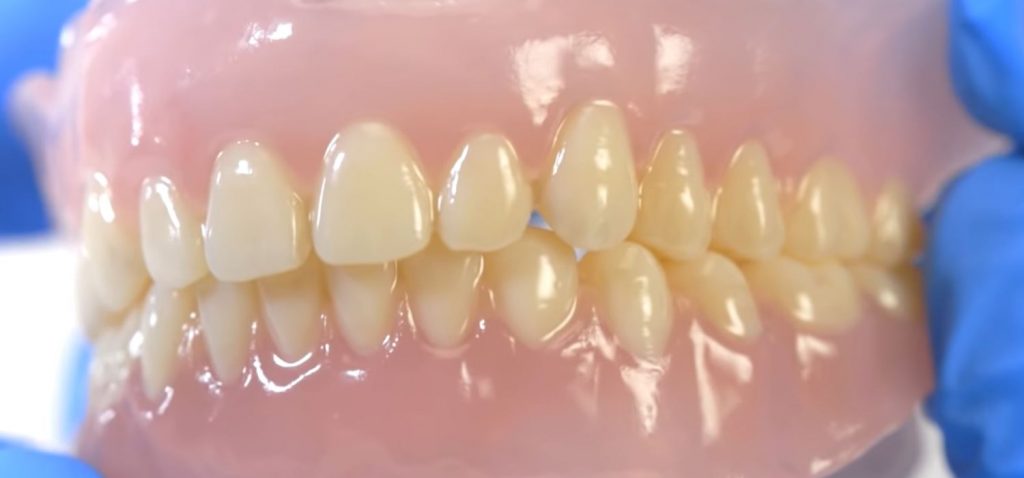
Every dental 3D printer requires post-processing, which consists of washing – to get all the extra resin and gunk off the prints — and curing. Most, if not all, the manufacturers on this list sell wash and cure tanks to go with dental 3D printers.
Most resins need to be washed in isopropyl alcohol, but some resins like Phrozen’s Water-Washable Resin don’t have that requirement.
For printing things like nightguards, crowns, and surgical guides, you will need a biocompatible resin, which is a resin certified by the FDA for use in a patient’s mouth. You don’t need a biocompatible resin to print dental models.
Most 3D printing manufacturers have separate resins for each application – for example, SprintRay offers its Die and Model 2 resin for dental models, and the NightGuard Firm resin for nightguards.
Also, just a general rule of thumb — always wear gloves while handling resins. It’s not something you want on your skin.
So Which Dental 3D Printer Is The Best?
The dental industry is literally spoilt for choice when it comes to dental 3D printing – and what we’ve learned from this list is that a printer doesn’t have to be super expensive to be good.
Overall, when it comes to speed, we think the SprintRay Pro is outstanding. Suppose you’re a medium to large-sized dental clinic or lab. In that case, we recommend the SprintRay Pro as it has the speed, efficiency, and accuracy needed to keep up with a large and challenging dental workflow.
The Phrozen Sonic XL 4K 2022 and Shining Accufab are great printers on a budget, maybe if you’re starting out with your dental lab or clinic, or you’re looking for a more cost-effective option and want to turn your productivity around with 3D printing.
The Juell 3D-3 is a durable, reasonably accurate, fast printer with good software.
The Asiga and Form 3B+ are both super accurate and fast – if you want to use a variety of resins, go for the Asiga — but if you’re OK with just the Formlabs resins, the Form 3B+ is a really solid choice. They’re both an excellent choice for smaller dental practices that work on a few specific applications, like implants or dentures.
The Envision One and Ackuretta SOL printers are both precise, accurate, and great for smaller labs. They don’t have super big build volumes that a bigger lab might require, but they have the accuracy that any dentistry professional requires.
The NextDent 5100 is suitable for a medium-sized clinic or lab thanks to the price range and the smaller build volume. The automation and convenience of this machine enable you to focus on other essential tasks.
The DentaJet is fast, precise, accurate, and can make a whole lot of different orthodontic devices, dental models, or implants in just one tray. This is perfect for a high-production lab that needs to create many different parts daily.




